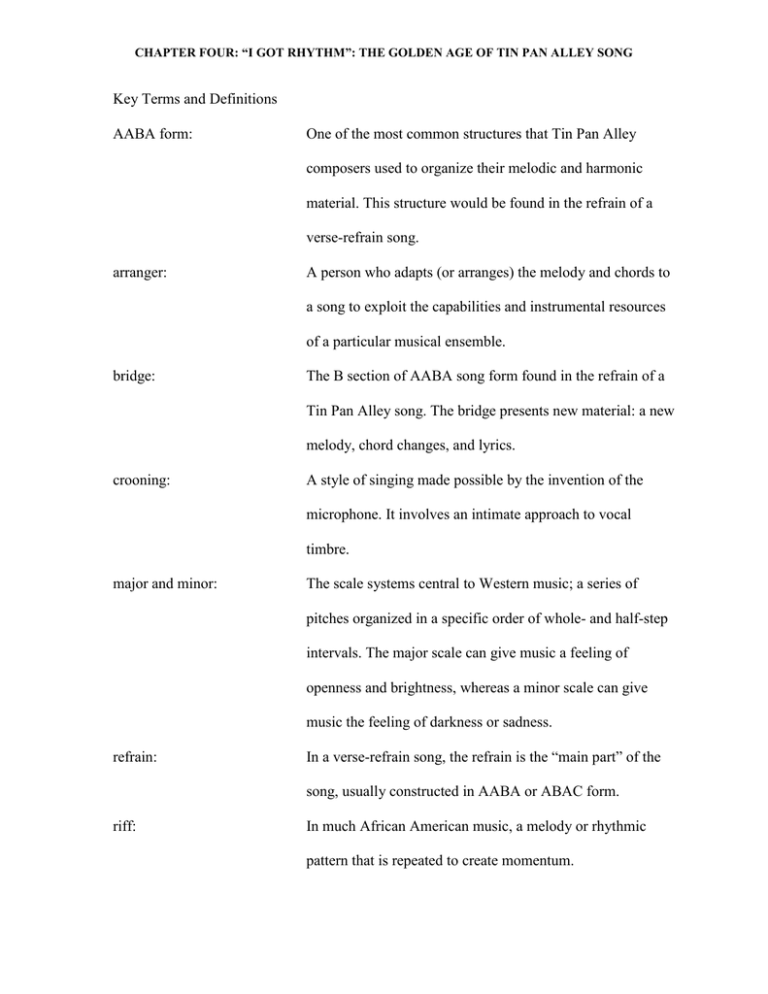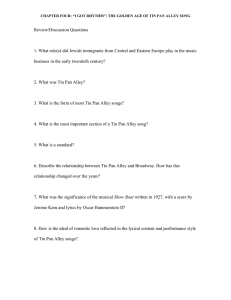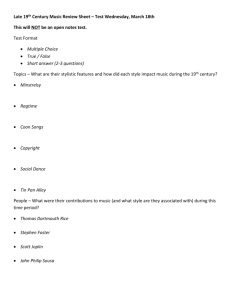Key Terms and Definitions AABA form:
advertisement

CHAPTER FOUR: “I GOT RHYTHM”: THE GOLDEN AGE OF TIN PAN ALLEY SONG Key Terms and Definitions AABA form: One of the most common structures that Tin Pan Alley composers used to organize their melodic and harmonic material. This structure would be found in the refrain of a verse-refrain song. arranger: A person who adapts (or arranges) the melody and chords to a song to exploit the capabilities and instrumental resources of a particular musical ensemble. bridge: The B section of AABA song form found in the refrain of a Tin Pan Alley song. The bridge presents new material: a new melody, chord changes, and lyrics. crooning: A style of singing made possible by the invention of the microphone. It involves an intimate approach to vocal timbre. major and minor: The scale systems central to Western music; a series of pitches organized in a specific order of whole- and half-step intervals. The major scale can give music a feeling of openness and brightness, whereas a minor scale can give music the feeling of darkness or sadness. refrain: In a verse-refrain song, the refrain is the “main part” of the song, usually constructed in AABA or ABAC form. riff: In much African American music, a melody or rhythmic pattern that is repeated to create momentum. CHAPTER FOUR: “I GOT RHYTHM”: THE GOLDEN AGE OF TIN PAN ALLEY SONG standards: American popular songs from the Tin Pan Alley style of songwriting that remain an essential part of the repertoire of today’s jazz musicians and pop singers. verse-refrain form: A two-part musical structure used by Tin Pan Alley composers in which the verses usually assumed an introductory character and were followed by the refrain. verse: Usually sets up a dramatic context or emotional tone. Although verses were the most important part of nineteenthcentury popular songs, they were regarded as mere introductions by the 1920s, and today the verses of Tin Pan Alley songs are infrequently performed.



